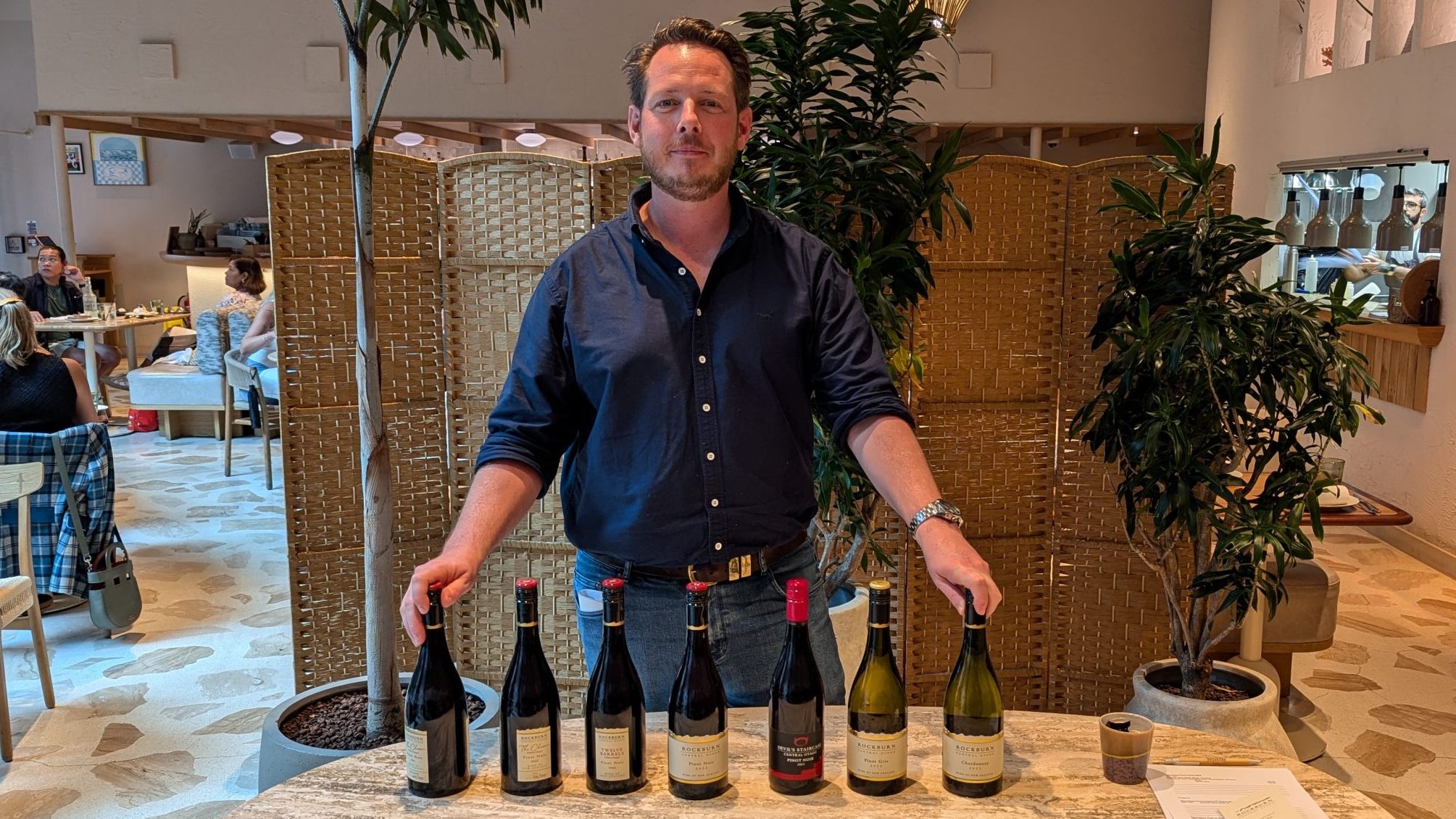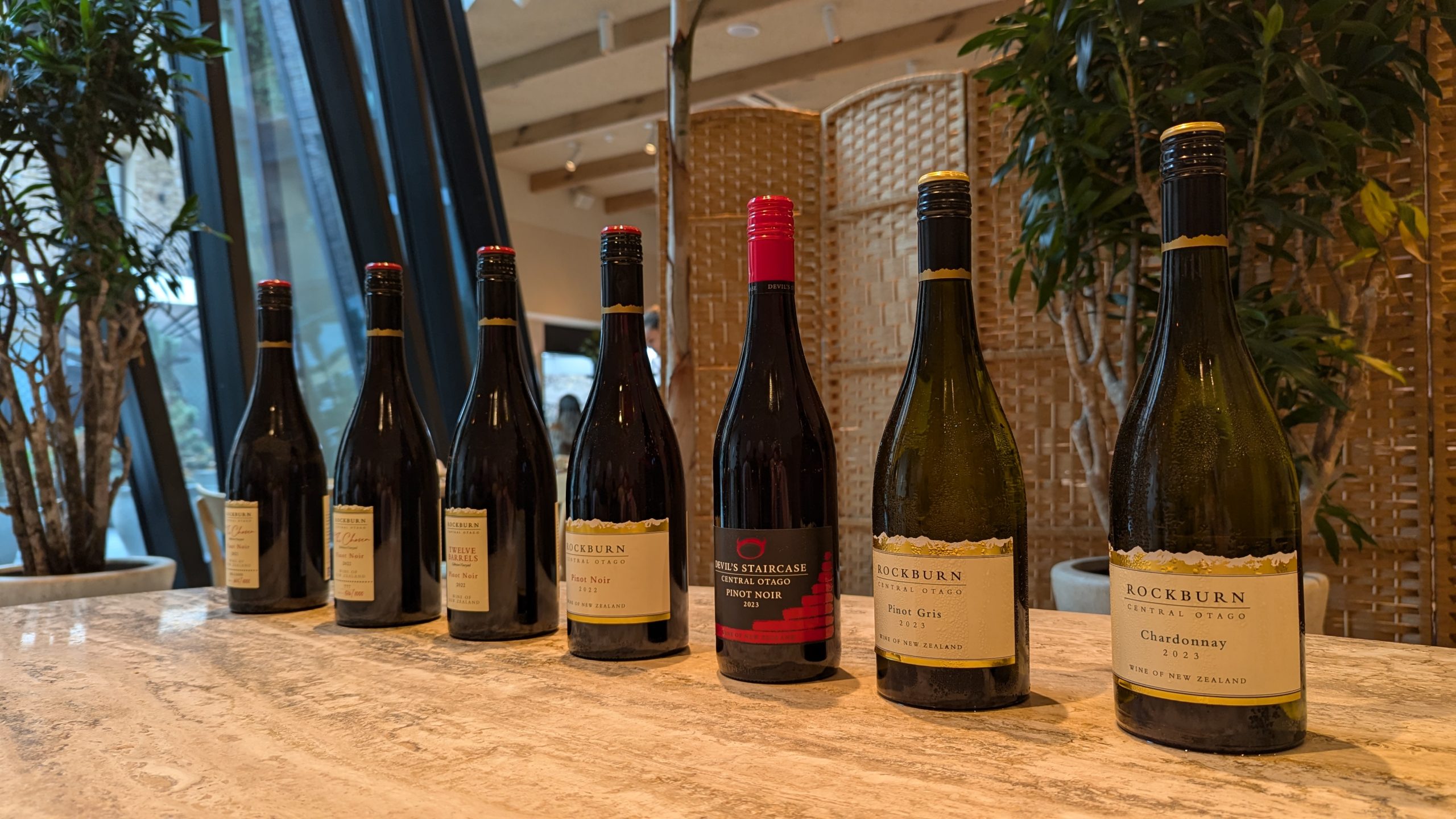Rockburn values “belonging” as Central Otago builds its reputation
Tim Severne, general manager at Rockburn Wines, explored with db how the winery communicates Central Otago vineyards.

“We’re a blip in the wine world,” reflects Tim Severne, as he leads a tasting of Rockburn’s wines. That is quite the admission given that Rockburn Wines, for whom he is general manager, is a New Zealand success story. As one of the largest wineries in Central Otago, whose Pinot Noirs are among New Zealand’s best sellers, Rockburn has built both a local foothold and an international reputation. Yet in an emerging region, its reach is still limited.
Sitting at 45° South, Central Otago’s latitude provides a naturally cool climate. Indeed, it is the world’s southernmost wine region. Much like Burgundy, with which it shares many grape varieties, viticulture is only possible thanks to its continental climate. It is the only wine region in New Zealand without a maritime climate, and its greater seasonal and diurnal temperature variation allows vines to thrive.
Central Otago is, however, both a small and a young region. Just 2,055 hectares are under vine, making it comparable in size to Spain’s Priorat and dwarfed by the 29,415ha in Marlborough. Even those plantings constitute a new phenomenon: in 1993, Central Otago’s vineyards covered just 20ha.
Rockburn has seen much of that progress first-hand. It began with owner Richard Bunton’s hobby vineyard of 3ha, established near Lake Hayes in 1991. It expanded through the 1990s under the Hay’s Lake brand before launching as Rockburn in 2002.
Having expanded its footprint, the name was chosen to reflect the varied, often rugged, Central Otago landscapes from which Rockburn sources its fruit. More than 20 years later, a connection to the region’s landscape is central to the team’s work. In Severne’s words, “a brand has to have an epicentre, a home, a belonging.”
Spreading the word about Central Otago
With such deep roots in Rockburn has crafted a portfolio, centred around Pinot Noir, that seeks to express the unique character of Central Otago. It also gives some indication of the challenge for a brand that has the platform to advocate widely for the region, but also a desire to express its specificities.
At the base of its pyramid sits the Devil’s Staircase Pinot Noir. As an unoaked, fruit-forward option, it expresses the vibrant, fresh character of Central Otago at a scale that can hit export markets. More than 300,000 bottles are produced each year.
Though named for a winding path through hills traditionally used for sheep farming, the wine is branded with devil horns and talk of Bacchanalian delights. With antipodean wines often in a fierce battle for attention on the shelf, Severne freely admits a degree of playfulness is required. Why the devilish imagery? “We sort of ran out of critters,” he jokes.

Partner Content
At a level up, there is still a need for consistency. Made with entirely estate-grown fruit, the Rockburn Pinot Noir is the second best-selling Pinot Noir over NZ$30 in New Zealand. Though vintages always have an impact, Severne sees reliability as central to its proposition: “We’re trying to make wines that are always going to deliver.”
The most specific selections
The winemaking team also finds time to make wines that, although too niche for the mass market, help convey the central character of Central Otago Pinot Noir. Some of them, despite three decades in the region, are nascent projects. “It’s exciting to be in such a young region,” says Severne.
In some instances that steers Rockburn away from its flagship grape. It farms one hectare of Chardonnay – “the white variety that Central Otago will be known for in five to ten years time” – from which it makes just 600 cases.
In other cases, that means a very precise selection of Pinot Noir. The Twelve Barrels Gibbston Pinot Noir uses fruit from the Gibbston sub-region, known for its light style due to high elevation sites. As the name might suggest, it comes from just 12 barrels, but these are selected each year on the sole metric of which seem the most interesting to the winemakers.
“It’s purely about what’s happening in the barrels, and looks different year on year,” explains Severne. “The winemakers don’t really know what it’ll look like before they put the 12 barrels together.”
In a similar vein, The Chosen wines offer very limited tastes –usually 1,000 bottles or fewer – of Rockburn’s vineyards. Originally conceived as cellar door releases, they might change year on year depending on what caught the attention of the winemakers. The 777 release, for instance, focused on a specific clone whereas the Hillside expression was selected by site.
The selection process gives the impression of a team still curious about their region. “It’s all about that walk through the vineyard at harvest,” summarises Severne. Even after 30 years building its reputation, it seems Rockburn is still uncovering pleasures in the vineyards of Central Otago.
Related news
Carlsberg Hong Kong expands no and low alcohol portfolio
Diageo sells East African Breweries stake to Asahi for US$2.3bn
Treasury Wine Estates plans leaner future amid US and China slowdown




